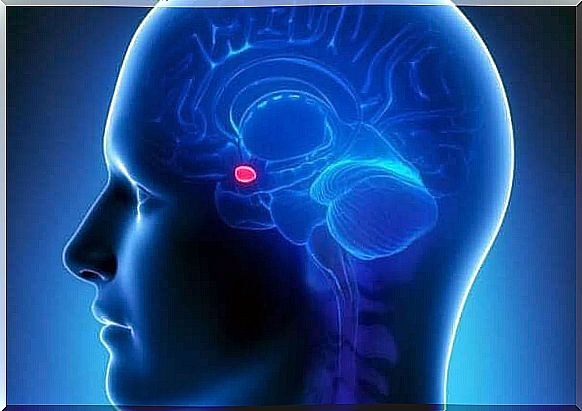The Neuroscience Of Revenge

The neuroscience of revenge says that there are people who, far from turning the page after a disappointment, a rejection or what they have interpreted as an injustice, nurture that hatred, even planning a way to return the disgust.
So, far from controlling anger, rationalizing the feeling or making proper use of any regulatory mechanism, they allow this malaise to become chronic.
Talking about revenge, as we all know, can often be tricky. That’s because it’s hard not to get into ethical, moral and even legal aspects. There are actions that obviously need a kind of response, but in these cases the courts are supposed to apply justice, and never personal violence.
However, what interests us in this article is to go deeper into the neurological and psychological aspects of the neuroscience of revenge.
Let’s look at an example. Anyone who enjoys following criminal literature is sure to remember the name of Ted Bundy. He was one of the worst serial killers in history and, to this day, the exact number of victims he took his life is not known.
After a series of interviews, psychological and neurological tests, something more than a personality marked by psychopathy was discovered: Bundy killed a large number of young people because of a desire for revenge that had been sustained for years.
The origin of this – and therefore the fact that triggered their actions – was the abandonment suffered in the context of a love relationship. That rejection fueled an unreasonable, even almost savage, anger in him. His anger made him look for victims with the same physical characteristics as the woman who had abandoned him.
Revenge, as we see from this example, can act on certain people in the form of a clearly aggressive and brutal mechanism. Today neuroscientists have discovered the mechanisms and areas of the brain that regulate this type of impulse.
It’s a topic as interesting as it is revealing. Let’s see more data about him below.

The neuroscience of revenge
If they hurt us… Shouldn’t we get revenge? Shakespeare already said in one of his works. Everyone, at some point in their lives, has experienced this same sensation.
After suffering an affront or being the victim of someone else’s bad deed, it is almost inevitable not to want to return the same damage suffered to the other person. Feeling like this and even experiencing this craving is a normal neurological and emotional fact.
Nevertheless, most of us rationalize the situation and, after a period of reflection and emotional management, we are content to turn the page. This last process, the one that regulates and erases the desire for revenge, is mediated by our cerebral cortex.
It is at this moment, more specifically in the dorsolateral prefrontal area, that the areas responsible for processing our self-control are located.
Now… What happens to people whose personality is marked by a vindictive streak?
The wound of revenge and injustice
The University of Geneva carried out some interesting research in early 2018. The neuroscience of revenge now has very solid evidence that demonstrates several aspects, some very impressive.
- Normally, when we talk about this type of behavior, it is common to refer to processes such as anger and anger. However, what causes this kind of emotion to appear? What triggers acts of revenge, most of the time, seems to be the feeling of rejection.
- Rejection is the harrowing feeling in which a person feels separated from something that, until recently, was very significant. It can be a love relationship, a job, feeling excluded from the family group or a group of friends, anything that is perceived as an injustice. It is even possible to feel that society itself is being responsible for the rejection.

Where is the revenge impulse located?
Dr. Olga Klimecki-Lenz, a researcher at the Swiss Center for Affective Science (CISA) has located the area where, so to speak, our vengeful impulses are concentrated.
- The structure that activates the feeling of anger is an old acquaintance: the amygdala.
- Thanks to a series of MRI tests, it was possible to see at an experimental level how this small brain structure activates when we experience an affront, a lie, the pain of rejection or contempt.
- It should be said that, in this type of situation, what you feel first is fear.
- The feeling of trust and security that we had until then about something or someone is broken and, at the same moment, fear and anguish arise. After that, there is anger and the urge to carry out some kind of punishment.
- This punishment sets up a reward system. That is, the person can feel pleasure in taking revenge and apply the same affront suffered by himself to the other.
- On the other hand, together with the activation of the amygdala, there is also the activation of the superior temporal lobe. These two areas intensify this need to shape a vindictive act. However, the most interesting is yet to come and happens later.
- When these two structures activate, intense activity in the dorsolateral prefrontal cortex immediately follows. The reason for this? Soothe the intensity of the emotion felt and encourage self-control.
This last piece of information opens up the interesting possibility of reducing violent and vengeful acts through magnetic stimulation. Nonetheless, aggressive behaviors, such as those that characterized serial killer Ted Bundy, depend on many factors that are not always explained by neurobiological factors.
The fascination for psychology and the neuroscience of revenge
From a cultural and even psychological point of view, revenge is a very interesting process.
That’s why we have masterpieces and already consecrated such as O Conde de Montecristo, in which Alejandro Dumas shows us that revenge is a dish that is eaten cold and can take years to be planned and executed.
However, we cannot overlook another essential aspect. People who perform this type of behavior on a regular basis evidence a fact that scientists such as Kevin M. Carlsmith, Timothy D. Wilson, and Daniel T. Gilbert have already demonstrated: lack of empathy.
Furthermore, if we ask ourselves why there are profiles characterized by this almost constant need to make others pay for what is considered an injustice, psychology says that there is almost always the same pattern: they are narcissistic, insecure people, with low emotional regulation, no ability to forgive and no empathy.
In conclusion, it is worth reflecting for a moment on a very simple idea. We’ve all felt the desire for revenge at some point. However, the decision to be calm and prudent is what makes us human, what makes us noble.









